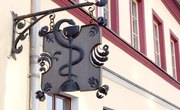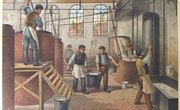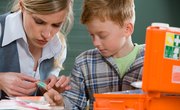Every team of doctors and nurses that work in the delivery room must have immediate access to a wide range of medical instruments. Giving birth to a child comes with the possibility of numerous challenges and without such equipment, the ability to manage unexpected situations becomes more difficult. Whether a vertex or breech or transverse birth, the delivery room must be prepared.
Fetal Monitor
Fetal monitors are utilized during pregnancy and labor to detect stress through careful observation of the baby's heart rate. Types of monitors include the doppler fetal monitor, which uses ultrasound; a fetal stethoscope, a trumpet shaped cousin of the common stethoscope placed directly on the abdomen; a telemetry monitor, which uses transmitters to relay information; and an internal fetal monitor, for high-risk births.
Ventouse
A ventouse is often used to assist in the delivery of a baby. This device is a type of vacuum with a suction cup that attaches to the baby's head. Anesthesia is not necessary during the procedure. The ventouse is not used when the baby is in a breech or transverse position.
Forceps
Obstetrical forceps are generally used to assist in the delivery of a baby when a ventouse is unsuccessful. Forceps have scissor-like handles that extend into long, curved spatula-like ends which are placed on either side of the baby's head. An anesthetic is administered as well. Forceps may be used during times of distress in the baby or mother, when pushing continually is not advisable for any reason, or when the baby can't be delivered alone by pushing.
Curette
A curette is usually employed during general gynecological procedures, but may be used in the delivery room as a result of a miscarriage. This scraping hand tool may have a looped or narrow spoon-shaped end and is used to remove tissue from the body.
Surgical Kit
An obstetrician's surgical kit is provided for every delivery room. A full kit will contain surgical instruments, all necessary drugs, resuscitation and sterilization equipment, renewable supplies and other medical equipment. Kits will include steel or titanium mayo scissors and kelly clamps for cutting and clamping the umbilical cord, and suction bulbs for nasal or oral secretions.
Related Articles
References
- "Checklists for the New Dad: The Expectant Father's Guide to Pregnancy, Delivery and Baby's First Year"; Joe Deyo; 2008
Writer Bio
Mike Biscoe has been writing since 2009. Focusing on travel, sports and entertainment topics, he has credits in various online publications including LIVESTRONG.COM and Trails. He often writes articles covering uncommon travel destinations from firsthand experience. Biscoe holds a Certificate of Completion in acting from the Pacific Conservatory of the Performing Arts.











